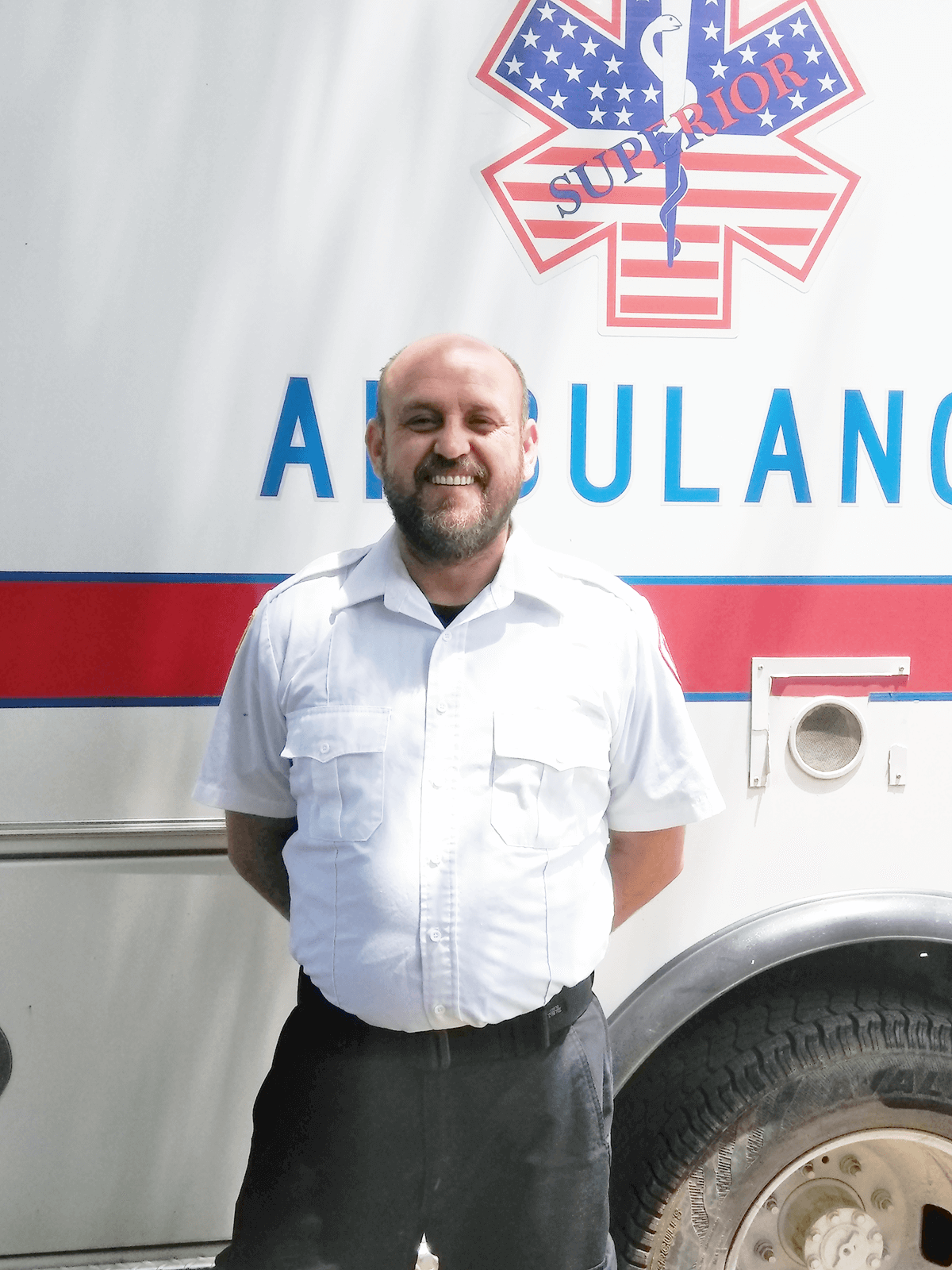
EMS Week is a time to recognize the sacrifices that EMS professionals make for their communities and to honor these skilled heroes who rush into danger when we need them most. AFSCME EMS professionals play an essential role in the emergency response system, but their stories—and the wounds they suffer on the job—are often overlooked.
AFSCME Now talked to a New Mexico paramedic with a unique window into the challenges EMS professionals face. Despite those challenges, his dedication reflects the resolve of all AFSCME EMS professionals.
-----
Forty-five minutes east of Albuquerque, in the center of New Mexico, sits Torrance County, roughly 3,500 square miles of sparsely populated scrub land. This was AFSCME paramedic James Certain’s first beat. As one of only two paramedics in the entire county, Certain’s first foray into EMS came with unusual challenges.
“When you finish school, most people think they’re going to the big city,” says Certain, an Albuquerque native. “But things conspired to bring me out here. In most situations, you’re five minutes from the nearest hospital. My nearest hospital was about 45 minutes away.”
The scarcity of other paramedics nearby and the vast territory he had to cover meant that the 39-year-old, who works for the private ambulance company Superior Ambulance, climbed an especially steep learning curve in his rookie days.
“When you’re new and you get into rural service, the medicine part is maybe the easiest—it’s drilled into you during your training,” recalls Certain. “But when you start, you go through this horrifying moment where you realize you’re the only paramedic around. You can’t just call another unit if you need help. And our first responders are often volunteers with little training, so they’re looking to you.”
A call nearly ten years ago highlighted the importance—and the challenges—of serving in rural EMS.
Certain had shown up at a home of a man who’d been having trouble breathing.
“We’re pulling into a driveway, and the fire department had just gotten there,” he says. “They’d just initiated CPR. The guy was in cardiac arrest.”
As Certain began to examine the patient, he noticed something the volunteer firefighters had not.
“He was having an anaphylactic reaction,” he recalls. “I’m looking at this guy and I put a scope inside his mouth, and I can’t see anything. I couldn’t intubate.”
With no way to clear an airway to get the patient breathing, and with the man’s family and the fire department desperate for his help, Certain had no choice: he had to perform a cricothyrotomy, or a cric – among the rarest and most advanced procedures a paramedic can perform. It involves using a scalpel to cut open an airway in a patient’s neck.
“That was the one and only time I’ve had to do it, but I knew what I had to do,” he says.
The patient’s breathing resumed. He was going to survive. The next step, though, was to transport him to a hospital. A helicopter had arrived on scene but when they started to load him, the flight crew discovered that he was too big. Certain would have to drive him, doubling the amount of time of the journey.
Finally, after arriving at the hospital, Certain found himself having to justify the use of the lifesaving technique he’d performed to a new medical resident. Luckily, a seasoned ER physician backed him up, explaining that Certain was right to do what he did: He’d saved the patient’s life.
That experience taught him a lot about being a paramedic, and in particular, about what his life would be like as a rural EMS professional.
“You’re a leader and a teacher. You have to be a quick study and willing to help,” says Certain. The challenges of rural EMS work can be amplified by the lack of a professional network to quickly call in moments of doubt.
After a two-year hiatus to work critical care EMS is Louisiana, Certain returned to EMS in New Mexico, splitting work between rural San Miguel County and the city of Las Vegas, New Mexico.
Certain jokes that being a paramedic “is the best job I’d never want to do again. For me, work is never ‘work.’ I have friends who dread going to work. The one thing you learn about EMS is you either love it or hate it. If you don’t love it, you’ll quit. I’m doing what I was meant to do.”
For Certain, EMS Week is about a lot more than just thanking EMS professionals and setting aside the week to recognize their sacrifices.
“I’ve started to look at EMS Week as time to reflect as a community on what we’ve done and the tolls that we’ve paid,” he says.
Some of those tolls include EMS professionals who’ve been injured, assaulted or even killed on the job. And other sacrifices involve the emotional trauma of responding to calls involving abused children or elderly people.
These hardships, Certain reminds people, “barely make a ripple in the news.” The public needs to be made aware of them, and the EMS community needs to be given the time and resources to address them.
One of the ways Certain has tried to gain perspective and peace after a decade in EMS is learning to fly. The pursuit of a pilot’s license has allowed him to recharge and focus his energy on a new pursuit. However, wherever his new hobby takes him, Certain says EMS will remain a part of his life, keeping him grounded.